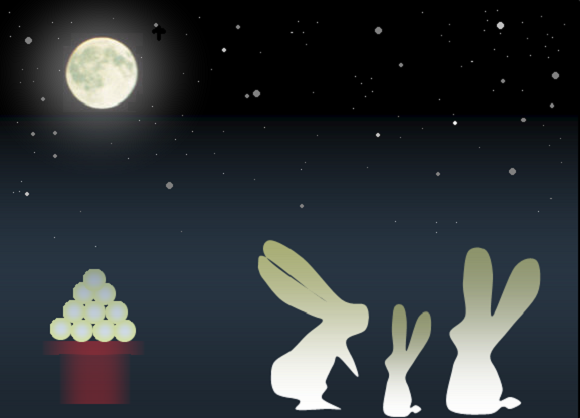
This week in Japan, people around the country are celebrating a special event known as tsukimi, literally “moon-viewing”. Celebrated on the 15th day of the lunar calendar (which lands sometime between September and October) it is the best time to look at the moon because the position of the earth, sun and moon make it appear especially big and bright. Just as with cherry blossom viewing, it’s a time to honor the beauty of nature with food, drink and friends.
One of the most traditional foods to celebrate with is called tsukimi dango which are sweets made of mochi (Japanese rice cake). But just as the Japanese dialect isn’t the same from Hokkaido to Okinawa, the look and taste of tsukimi dango vary from region to region. Here are three of the most interesting versions from across Japan!
This is a picture of what tsukimi dango looks like in many parts of Japan. They are simply mochi and often stacked on top of each other in a pyramid shape. Sometimes they are dipped in a delectable red bean sauce to add a touch of flavor.
▼By eating them you are celebrating good health, the bounty of the year’s harvest and the beauty of the moon!
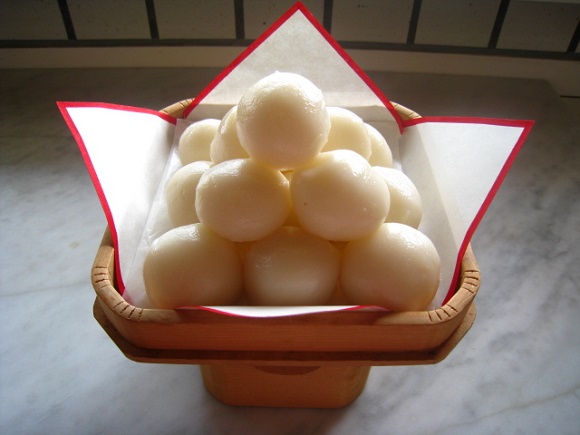
How does this simple sweet transform in different places in Japan? Let’s start with Okinawa in the south.
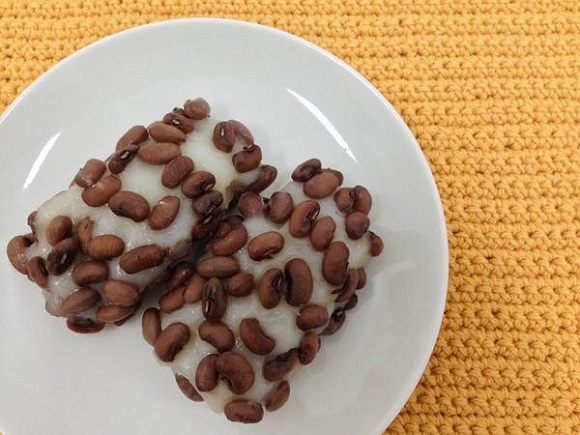
In Okinawa, they don’t eat tsukimi dango but rather bufuchagi. It is essentially made of the same ingredients, but they sure do look strange. The red beans cover the outside of the mochi, and it’s actually very similar to another sweet called ohagi. People might be surprised by the size and the appearance of the whole red beans, but in Okinawa, it is said that red beans protect people from evil, so it is important to keep them intact.
▼No, demons…I will eat this and you will stay back!
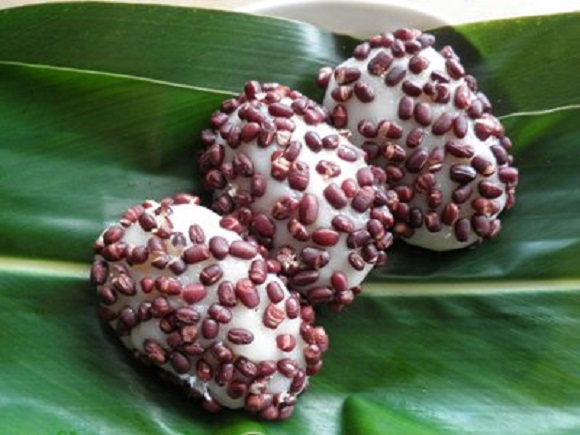
Let’s move inland and head on over to Kansai!
▼Whoah, what is that!?! Is that a dango bug???
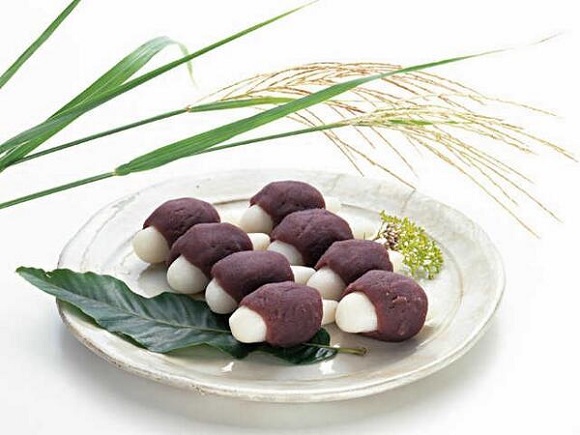
As you can see the shape and the presentation are totally different. The red bean paste forms a cute belt and the shape of the dango represents a taro root. Taro was an important crop during the harvest so they shaped the tsukimi dango like it.
▼ Taro is similar in taste to a sweet potato.
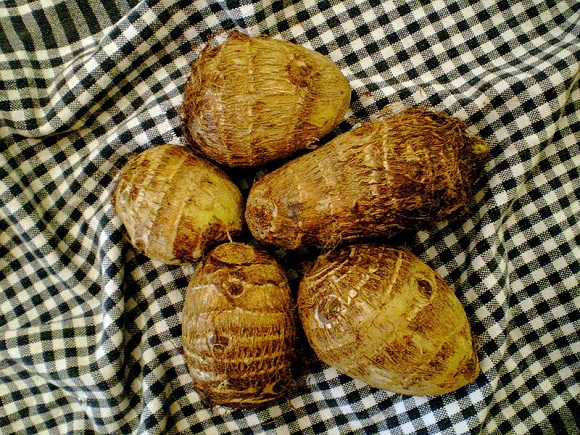
In the latter part of the Edo Period, people believed the white mochi represented the moon and the red bean paste represented the clouds covering the moon.
Our last stop on the tsukimi dango train is Nagoya, where we encounter some really colorful ones!
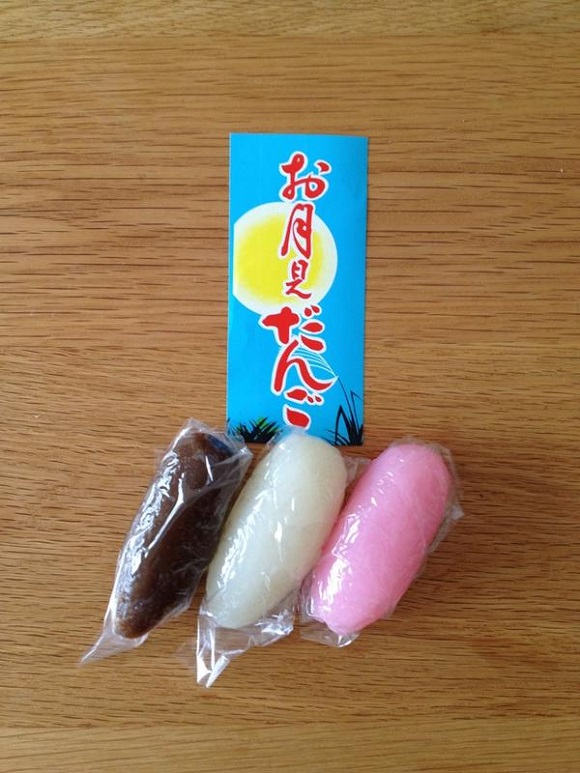
In Nagoya, the tsukimi dango comes in three different colors and are usually served together. If you think the white represents the moon, you would be mistaken!
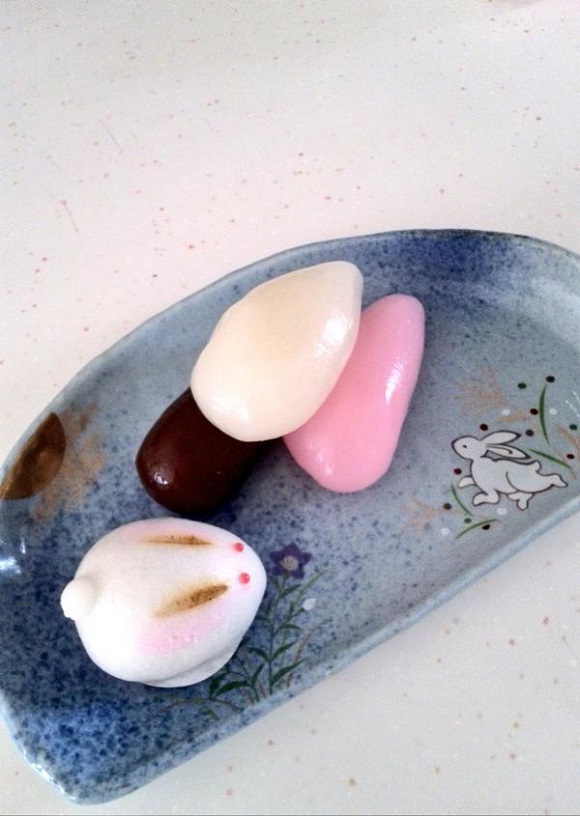
Two of the colors are thanks to our friend taro again; the brown represents the taro with the skin on, and the white represents the taro with the skin off. The pink color’s only purpose seems to be to entertain children. Perhaps the bright pink color will make them think the dango is really sweet, but they’ll be in for a surprise when all they taste is mochi!
If any of these sweets have piqued your interest, you should give them a try! Just be warned that tsukimi dango is only around for a limited time each year. Which means you might have to wait a whole year to eat them! Good thing there are plenty of other sweets in Japan to try.
▼Like these bite-sized chocolate-covered ice cream.
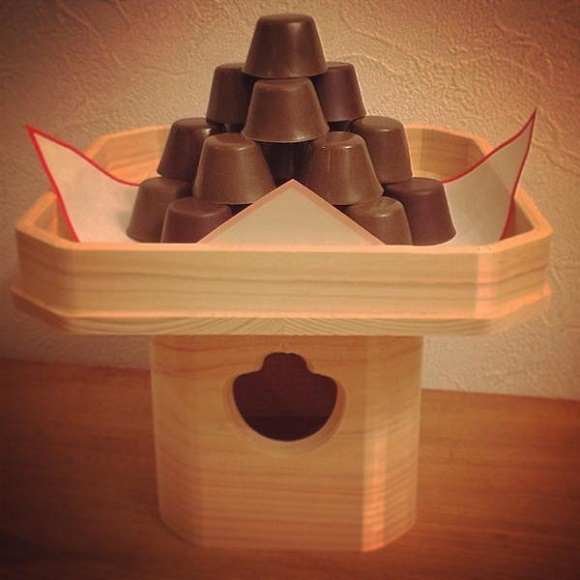
Or if sweets aren’t your thing, there is always the limited-time tsukimi Burger from McDonald’s to entertain your palate.
▼The fall specialty burger in Japan.
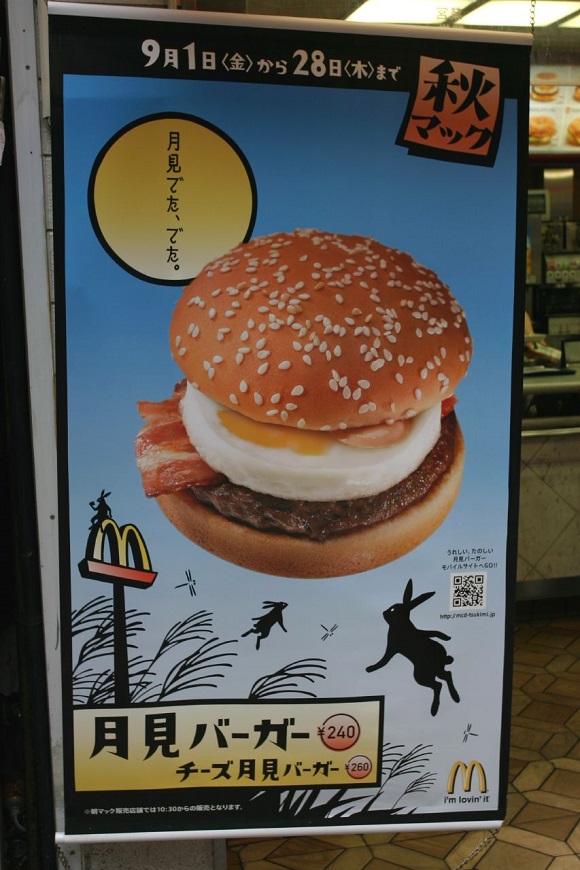
Which ones have you tried? Are there other types of tsukimi dango you’ve seen in Japan? Let us know if the comments!
Sources: Matome Naver
Top Image: Flickr (Héctor García)

 McDonald’s Japan releases new Tsukimi “moon-viewing” burgers for 2021
McDonald’s Japan releases new Tsukimi “moon-viewing” burgers for 2021 McDonald’s Japan’s new Tsukimi “moon-viewing” burger takes melty cheese to a whole new level
McDonald’s Japan’s new Tsukimi “moon-viewing” burger takes melty cheese to a whole new level The two best Tsukimi Moon-Viewing burgers in Japan for 2023
The two best Tsukimi Moon-Viewing burgers in Japan for 2023 McDonald’s Japan’s Tsukimi “moon-viewing” pie oozes Japanese flavour
McDonald’s Japan’s Tsukimi “moon-viewing” pie oozes Japanese flavour Invasion of the moon rabbits: the delicious tradition of otsukimi 【Photos】
Invasion of the moon rabbits: the delicious tradition of otsukimi 【Photos】 How to order snacks on a Shinkansen bullet train in Japan
How to order snacks on a Shinkansen bullet train in Japan Japan’s new difficult-to-drink-from beer glass protects your liver, but it’s a brutal experience
Japan’s new difficult-to-drink-from beer glass protects your liver, but it’s a brutal experience Demon Slayer: Kimetsu no Yaiba gets new roller coaster attractions and food at Universal Studios Japan
Demon Slayer: Kimetsu no Yaiba gets new roller coaster attractions and food at Universal Studios Japan Burger King Japan suddenly adds Dr. Pepper and Dr. Pepper floats to its menu nationwide
Burger King Japan suddenly adds Dr. Pepper and Dr. Pepper floats to its menu nationwide New Pokémon ice cream, dessert drinks, and cool merch coming to Baskin-Robbins Japan【Pics】
New Pokémon ice cream, dessert drinks, and cool merch coming to Baskin-Robbins Japan【Pics】 New Nintendo Lego kit is a beautiful piece of moving pixel art of Mario and Yoshi【Photos】
New Nintendo Lego kit is a beautiful piece of moving pixel art of Mario and Yoshi【Photos】 New samurai glasses are Japan’s latest weird must-have souvenir
New samurai glasses are Japan’s latest weird must-have souvenir Kyoto Tower mascot termination reveals dark side behind cute Japanese characters
Kyoto Tower mascot termination reveals dark side behind cute Japanese characters Hello, cosmetics! Clinique teams up with Hello Kitty this summer for first-time collaboration
Hello, cosmetics! Clinique teams up with Hello Kitty this summer for first-time collaboration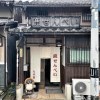 This Nara workshop has been making deer crackers for more than 100 years and offers tours【Photos】
This Nara workshop has been making deer crackers for more than 100 years and offers tours【Photos】 Nintendo history you can feel – Super NES, N64, and GameCube controllers become capsule toys
Nintendo history you can feel – Super NES, N64, and GameCube controllers become capsule toys “The most Delicious Cup Noodle in history” – Japan’s French Cup Noodle wins our heart【Taste test】
“The most Delicious Cup Noodle in history” – Japan’s French Cup Noodle wins our heart【Taste test】 Starbucks releases a cute Frappuccino and Unicorn Cake…but not in Japan
Starbucks releases a cute Frappuccino and Unicorn Cake…but not in Japan McDonald’s Japan’s Soft Twist Tower: A phantom ice cream only sold at select branches
McDonald’s Japan’s Soft Twist Tower: A phantom ice cream only sold at select branches Yabai Ramen: What makes this Japanese ramen so dangerous?
Yabai Ramen: What makes this Japanese ramen so dangerous? Finally! Nintendo Japan expands Switch 8-bit controller sales to everybody, Online member or not
Finally! Nintendo Japan expands Switch 8-bit controller sales to everybody, Online member or not Japanese government wants to build luxury resorts in all national parks for foreign tourists
Japanese government wants to build luxury resorts in all national parks for foreign tourists To combat declining birth rate, Japan to begin offering “Breeding Visas” to foreigners
To combat declining birth rate, Japan to begin offering “Breeding Visas” to foreigners 10 things you should buy at 7-Eleven in Japan
10 things you should buy at 7-Eleven in Japan Studio Ghibli releases anime heroine cosplay dresses that are super comfy to wear
Studio Ghibli releases anime heroine cosplay dresses that are super comfy to wear Woman charged for driving suitcase without a license in Osaka
Woman charged for driving suitcase without a license in Osaka Studio Ghibli unveils My Neighbour Totoro miniature house model
Studio Ghibli unveils My Neighbour Totoro miniature house model Kyoto experiencing problems with foreign tourists not paying for bus fares, but not on purpose
Kyoto experiencing problems with foreign tourists not paying for bus fares, but not on purpose Fighting mild hunger with a Japanese soda that turns into jelly in the stomach【Taste test】
Fighting mild hunger with a Japanese soda that turns into jelly in the stomach【Taste test】 Studio Ghibli’s Howl’s Moving Castle tapestry unveiled in Japan for first time
Studio Ghibli’s Howl’s Moving Castle tapestry unveiled in Japan for first time McDonald’s new Happy Meals offer up cute and practical Sanrio lifestyle goods
McDonald’s new Happy Meals offer up cute and practical Sanrio lifestyle goods Sales of Japan’s most convenient train ticket/shopping payment cards suspended indefinitely
Sales of Japan’s most convenient train ticket/shopping payment cards suspended indefinitely Sold-out Studio Ghibli desktop humidifiers are back so Totoro can help you through the dry season
Sold-out Studio Ghibli desktop humidifiers are back so Totoro can help you through the dry season Japanese government to make first change to romanization spelling rules since the 1950s
Japanese government to make first change to romanization spelling rules since the 1950s Foreigner’s request for help in Tokyo makes us sad for the state of society
Foreigner’s request for help in Tokyo makes us sad for the state of society Ghibli founders Toshio Suzuki and Hayao Miyazaki contribute to Japanese whisky Totoro label design
Ghibli founders Toshio Suzuki and Hayao Miyazaki contribute to Japanese whisky Totoro label design Doraemon found buried at sea as scene from 1993 anime becomes real life【Photos】
Doraemon found buried at sea as scene from 1993 anime becomes real life【Photos】 Tokyo’s most famous Starbucks is closed
Tokyo’s most famous Starbucks is closed Princesses, fruits, and blacksmiths: Study reveals the 30 most unusual family names in Japan
Princesses, fruits, and blacksmiths: Study reveals the 30 most unusual family names in Japan Mochi burgers with Japanese seasonings on the way to expand rising moon-viewing burger genre
Mochi burgers with Japanese seasonings on the way to expand rising moon-viewing burger genre Starbucks Japan unveils new Sakura Frappuccino for cherry blossom-viewing season 2024
Starbucks Japan unveils new Sakura Frappuccino for cherry blossom-viewing season 2024 Trying out First Kitchen’s tsukimi mochi burgers for a taste of Japanese autumn
Trying out First Kitchen’s tsukimi mochi burgers for a taste of Japanese autumn McDonald’s releases new Sukiyaki Tsukimi Burger in Japan for moon viewing season 2022
McDonald’s releases new Sukiyaki Tsukimi Burger in Japan for moon viewing season 2022 Eating Japan’s Sailor Moon moon-viewing sausage sandwich【Taste test】
Eating Japan’s Sailor Moon moon-viewing sausage sandwich【Taste test】 Tokyo pub lets you grill traditional Japanese dessert right at your table in all-you-can-eat deal
Tokyo pub lets you grill traditional Japanese dessert right at your table in all-you-can-eat deal Lotteria’s Tsukimi Rib Sandwich joins the fight for Japanese tsukimi supremacy【Taste test】
Lotteria’s Tsukimi Rib Sandwich joins the fight for Japanese tsukimi supremacy【Taste test】 We tried the new McDonald’s Japanese seasonal exclusive “Full Moon Cheese Tsukimi Burger”!
We tried the new McDonald’s Japanese seasonal exclusive “Full Moon Cheese Tsukimi Burger”! Sailor Moon sausage sandwiches appear at Mos Burger in time for Japan’s moon-viewing season
Sailor Moon sausage sandwiches appear at Mos Burger in time for Japan’s moon-viewing season Is Starbucks Japan’s hot Hanami Sakura Cream better than the Frappuccino?
Is Starbucks Japan’s hot Hanami Sakura Cream better than the Frappuccino? Japanese netizen goes ham for hanami with supersized dango and we live for it【Photos】
Japanese netizen goes ham for hanami with supersized dango and we live for it【Photos】 Starbucks releases new sakura Frappuccino in Japan, but does it taste as good as it looks?
Starbucks releases new sakura Frappuccino in Japan, but does it taste as good as it looks? McDonald’s and KFC Japan release new Tsukimi “moon-viewing” burgers for 2020
McDonald’s and KFC Japan release new Tsukimi “moon-viewing” burgers for 2020 KFC Japan invites you to admire beauty of moon, then eat it with tsukimi fried chicken sandwiches
KFC Japan invites you to admire beauty of moon, then eat it with tsukimi fried chicken sandwiches Baymax mitarashi dango: The best rice dumplings you can buy or Disney-themed choking hazard?
Baymax mitarashi dango: The best rice dumplings you can buy or Disney-themed choking hazard?
Leave a Reply